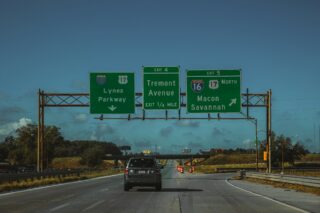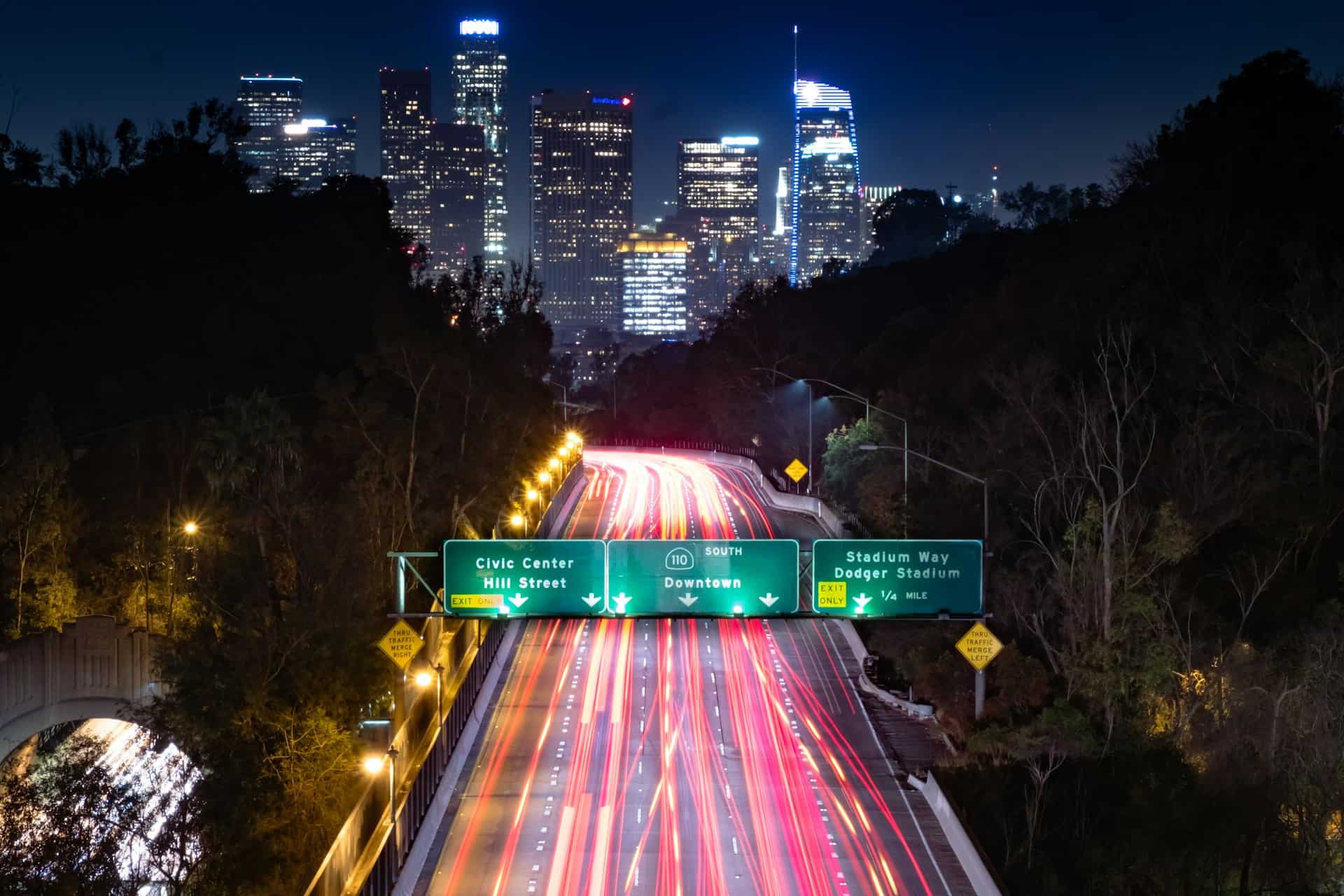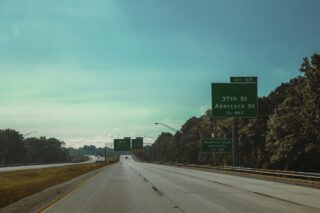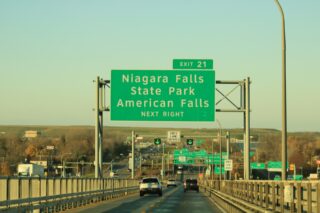Freeway traffic signs are an essential component of ensuring safe and efficient travel on highways and expressways. These signs convey crucial information to drivers, including speed limits, lane usage, upcoming exits, and potential hazards.
By providing clear and concise instructions, they help to regulate traffic flow, reduce accidents, and enhance overall driver safety. Whether indicating a sharp curve ahead, a construction zone, or a rest area, these signs play a vital role in guiding motorists through the complex network of interchanges and lanes, ultimately contributing to a smoother and more organized driving experience. Understanding the significance of these traffic signs is fundamental for all drivers, as it enables them to navigate the roadways with confidence and awareness.
Significance of Freeway Traffic Signs
 The significance of freeway traffic signs cannot be overstated, as they serve as crucial guides for drivers navigating the complex network of highways and expressways. These signs offer vital information about speed limits, lane usage, upcoming exits, and potential hazards, ensuring that drivers can make informed decisions and react appropriately to changing road conditions.
The significance of freeway traffic signs cannot be overstated, as they serve as crucial guides for drivers navigating the complex network of highways and expressways. These signs offer vital information about speed limits, lane usage, upcoming exits, and potential hazards, ensuring that drivers can make informed decisions and react appropriately to changing road conditions.
By providing clear and concise instructions, freeway traffic signs contribute to the efficient flow of traffic, reducing the likelihood of accidents and promoting overall driver safety. These signs also play a key role in standardizing traffic regulations, ensuring consistency and predictability for motorists traveling across different regions. Their significance lies in their ability to enhance road safety, regulate traffic flow, and facilitate a more organized and manageable driving experience for all road users.
What Material are Freeway Traffic Signs Made of?
They are often made of durable materials designed to withstand various weather conditions. The most common materials used for freeway traffic signs include aluminum, steel, and sometimes composite materials. Aluminum is a popular choice due to its lightweight nature, resistance to corrosion, and longevity, making it ideal for outdoor applications. Steel is another robust option, offering exceptional durability and strength, especially for larger or more rigid signs and/or frames that hold the aluminum signs.
In some cases, composite materials, such as fiberglass-reinforced plastic, may be used for certain specialty signs, providing a balance of durability and flexibility. Regardless of the specific material, they are engineered to maintain visibility, legibility, and structural integrity over extended periods, ensuring their effectiveness in guiding and informing motorists on the road.
Do Freeway Traffic Signs Need to be Reflective?
 Yes, they need to be reflective to ensure visibility and legibility, especially during low-light conditions or at night. Reflective sheeting allows these signs to remain conspicuous and easily readable when illuminated by headlights or other sources of light. This reflective property is crucial for enhancing the visibility of freeway signs from a distance, enabling drivers to anticipate upcoming road conditions, exits, and potential hazards.
Yes, they need to be reflective to ensure visibility and legibility, especially during low-light conditions or at night. Reflective sheeting allows these signs to remain conspicuous and easily readable when illuminated by headlights or other sources of light. This reflective property is crucial for enhancing the visibility of freeway signs from a distance, enabling drivers to anticipate upcoming road conditions, exits, and potential hazards.
By incorporating reflective elements, they significantly contribute to road safety by providing clear guidance to motorists, even in adverse visibility conditions. Moreover, the reflective nature of these signs helps to minimize the risk of accidents and promotes overall driver awareness, making them an indispensable feature of highway infrastructure.
Do Freeway Traffic Signs Need to be MUTCD-Compliant?
Yes, they do need to adhere to the MUTCD (Manual on Uniform Traffic Control Devices) to ensure consistency and standardization in traffic control devices and practices. Adhering to MUTCD guidelines is essential as it promotes uniformity in signage design, placement, and usage, across different states and regions. By complying with MUTCD standards, freeway signs are designed to maximize clarity, visibility, and comprehension for motorists, ultimately enhancing safety and minimizing confusion on the road.
The MUTCD provides specifications for sign colors, shapes, sizes, and placement, all of which are critical for ensuring that freeway signs effectively communicate essential information to drivers in a consistent and recognizable manner. Therefore, adherence to MUTCD guidelines is vital for freeway signs to fulfill their role as informative and guiding elements of the transportation infrastructure.
Difference of Freeway Traffic Signs from Other Road Signs
 Freeway traffic signs differ from other road signs in several key ways. First, they are specifically designed to provide information and guidance for drivers navigating high-speed, multi-lane roads, often with complex interchanges and exits. These signs often convey crucial information such as speed limits, lane usage, upcoming exits, and potential hazards, which are particularly relevant to freeway driving.
Freeway traffic signs differ from other road signs in several key ways. First, they are specifically designed to provide information and guidance for drivers navigating high-speed, multi-lane roads, often with complex interchanges and exits. These signs often convey crucial information such as speed limits, lane usage, upcoming exits, and potential hazards, which are particularly relevant to freeway driving.
In contrast, other road signs, such as those found on local streets or rural roads, may focus on different aspects of traffic management and safety, such as pedestrian crossings, school zones, or local landmarks. Also, freeway traffic signs often employ larger fonts, bolder colors, and standardized shapes to ensure high visibility and legibility at high speeds, distinguishing them from the signs used in other road settings.
Common Examples of Freeway Traffic Signs
1. Guide Signs:
o Provide information about destinations, distances, and directions.
o Guide motorists to specific locations such as cities, tourist attractions, and services.
o May include exit numbers and route markers to aid travelers in navigation.

2. Symbol-Based Signs:
o Often feature symbols rather than words to convey messages.
o White background indicates regulatory signs.
o Yellow conveys general warning messages.
o Green shows permitted traffic movements or directional guidance.
3. Exit and Interchange Signs:
o Feature exit numbers corresponding to the distance from the beginning of the freeway.
o Include various exit signs used on freeways.
o Advance signs use arrows to show which lanes lead off the freeway.
Conclusion
Freeway traffic signs are a vital component of the transportation infrastructure, serving to provide essential information and guidance to drivers navigating high-speed, multi-lane roads. These signs, including guide signs, symbol-based signs, and exit/interchange signs, are designed to enhance safety, minimize confusion, and promote efficient traffic flow on freeways. By effectively conveying information about destinations, distances, lane usage, speed limits, and potential hazards, they play a crucial role in ensuring the safety and efficiency of freeway travel, ultimately contributing to a smoother and more informed driving experience for motorists.
Popular Posts:




